The Impacts of Heating Strategy on Soil Moisture Estimation Using Actively Heated Fiber Optics
Abstract
1. Introduction
2. Materials and Methods
2.1. Experimental Site and Data Collection
2.2. Soil Moisture Estimation Methods
2.2.1. The Method
2.2.2. The Method
2.2.3. The Method
2.3. Background Temperature Correction
2.4. AHFO Evaluation Metrics
3. Results and Discussion
3.1. Comparison of the Heat Pulse Analysis Methods
3.2. Comparison of the Estimated Soil Moisture
3.3. The Impact of Background Temperature Correction
4. Conclusions
Acknowledgments
Author Contributions
Conflicts of Interest
References
- Robinson, D.A.; Campbell, C.S.; Hopmans, J.W.; Hornbuckle, B.K.; Jones, S.B.; Knight, R.; Ogden, F.; Selker, J.; Wendroth, O. Soil Moisture Measurement for Ecological and Hydrological Watershed-Scale Observatories: A Review. Vadose Zone J. 2008, 7, 358. [Google Scholar] [CrossRef]
- Crow, W.T.; Berg, A.A.; Cosh, M.H.; Loew, A.; Mohanty, B.P.; Panciera, R.; de Rosnay, P.; Ryu, D.; Walker, J.P. Upscaling sparse ground-based soil moisture observations for the validation of coarse-resolution satellite soil moisture products. Rev. Geophys. 2012, 50, 2002. [Google Scholar] [CrossRef]
- Zreda, M.; Desilets, D.; Ferré, T.; Scott, R.L. Measuring soil moisture content non-invasively at intermediate spatial scale using cosmic-ray neutrons. Geophys. Res. Lett. 2008, 35, L21402. [Google Scholar] [CrossRef]
- Larson, K.M.; Small, E.E.; Gutmann, E.D.; Bilich, A.L.; Braun, J.J.; Zavorotny, V.U. Use of GPS receivers as a soil moisture network for water cycle studies. Geophys. Res. Lett. 2008, 35. [Google Scholar] [CrossRef]
- Larson, K.M.; Small, E.E.; Gutmann, E.; Bilich, A.; Axelrad, P.; Braun, J. Using GPS multipath to measure soil moisture fluctuations: Initial results. GPS Solut. 2008, 12, 173–177. [Google Scholar] [CrossRef]
- Sayde, C.; Gregory, C.; Gil-Rodriguez, M.; Tufillaro, N.; Tyler, S.; van de Giesen, N.; English, M.; Cuenca, R.; Selker, J.S. Feasibility of soil moisture monitoring with heated fiber optics. Water Resour. Res. 2010, 46, W06201. [Google Scholar] [CrossRef]
- Steele-Dunne, S.C.; Rutten, M.M.; Krzeminska, D.M.; Hausner, M.; Tyler, S.W.; Selker, J.; Bogaard, T.A.; van de Giesen, N.C. Feasibility of soil moisture estimation using passive distributed temperature sensing. Water Resour. Res. 2010, 46, W03534. [Google Scholar] [CrossRef]
- Dong, J.; Steele-Dunne, S.C.; Ochsner, T.E.; van de Giesen, N. Determining soil moisture by assimilating soil temperature measurements using the Ensemble Kalman Filter. Adv. Water Resour. 2015, 86, 340–353. [Google Scholar] [CrossRef]
- Dong, J.; Steele-Dunne, S.C.; Judge, J.; van de Giesen, N. A particle batch smoother for soil moisture estimation using soil temperature observations. Adv. Water Resour. 2015, 83, 111–122. [Google Scholar] [CrossRef]
- Dong, J.; Steele-Dunne, S.C.; Ochsner, T.E.; van de Giesen, N. Estimating soil moisture and soil thermal and hydraulic properties by assimilating soil temperatures using a particle batch smoother. Adv. Water Resour. 2016, 91, 104–116. [Google Scholar] [CrossRef]
- Dong, J.; Steele-Dunne, S.C.; Ochsner, T.E.; van de Giesen, N. Determining soil moisture and soil properties in vegetated areas by assimilating soil temperatures. Water Resour. Res. 2016, 52, 4280–4300. [Google Scholar] [CrossRef]
- Selker, J.S.; Thévenaz, L.; Huwald, H.; Mallet, A.; Luxemburg, W.; van De Giesen, N.; Stejskal, M.; Zeman, J.; Westhoff, M.; Parlange, M.B. Distributed fiber-optic temperature sensing for hydrologic systems. Water Resour. Res. 2006, 42, W12202. [Google Scholar] [CrossRef]
- Sayde, C.; Buelga, J.B.; Rodriguez-Sinobas, L.; El Khoury, L.; English, M.; van de Giesen, N.; Selker, J.S. Mapping variability of soil water content and flux across 1–1000 m scales using the Actively Heated Fiber Optic method. Water Resour. Res. 2014, 50, 7302–7317. [Google Scholar] [CrossRef]
- Gil-Rodríguez, M.; Rodríguez-Sinobas, L.; Benítez-Buelga, J.; Sánchez-Calvo, R. Application of active heat pulse method with fiber optic temperature sensing for estimation of wetting bulbs and water distribution in drip emitters. Agric. Water Manag. 2013, 120, 72–78. [Google Scholar] [CrossRef]
- Striegl, A.M.; Loheide, S.P., II. Heated distributed temperature sensing for field scale soil moisture monitoring. Ground Water 2012, 50, 340–347. [Google Scholar] [CrossRef] [PubMed]
- Ciocca, F.; Lunati, I.; Van de Giesen, N.; Parlange, M.B. Heated optical fiber for distributed soil-moisture measurements: A lysimeter experiment. Vadose Zone J. 2012, 11. [Google Scholar] [CrossRef]
- Hausner, M.B.; Suárez, F.; Glander, K.E.; Giesen, N.v.d.; Selker, J.S.; Tyler, S.W. Calibrating single-ended fiber-optic Raman spectra distributed temperature sensing data. Sensors 2011, 11, 10859–10879. [Google Scholar] [CrossRef] [PubMed]
- Boisvert, J.; Gwyn, Q.; Chanzy, A.; Major, D.; Brisco, B.; Brown, R. Effect of surface soil moisture gradients on modelling radar backscattering from bare fields. Int. J. Remote Sens. 1997, 18, 153–170. [Google Scholar] [CrossRef]
- Rutten, M.M.; Steele-Dunne, S.C.; Judge, J.; van de Giesen, N. Understanding Heat Transfer in the Shallow Subsurface Using Temperature Observations. Vadose Zone J. 2010, 9, 1034. [Google Scholar] [CrossRef]
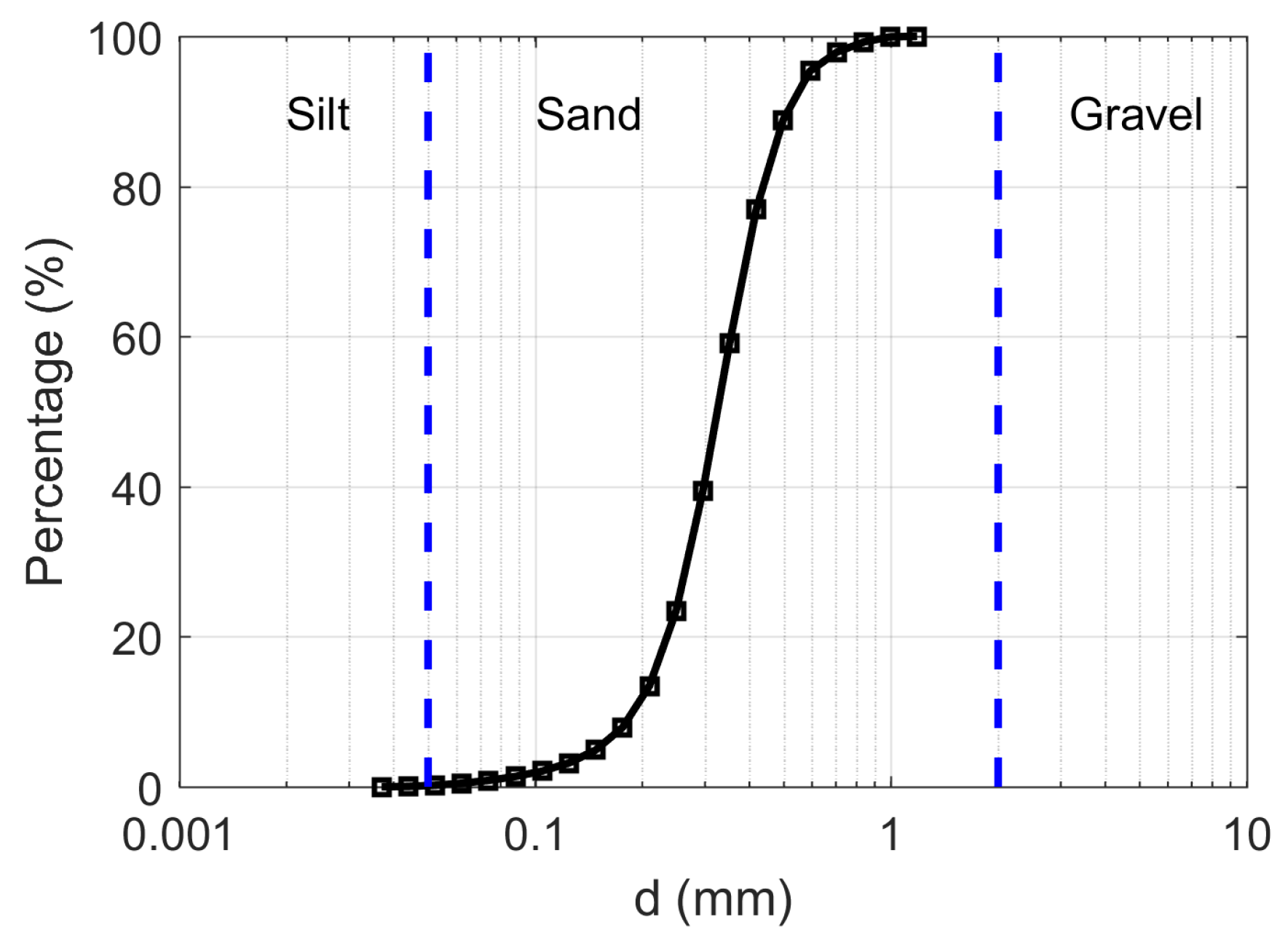
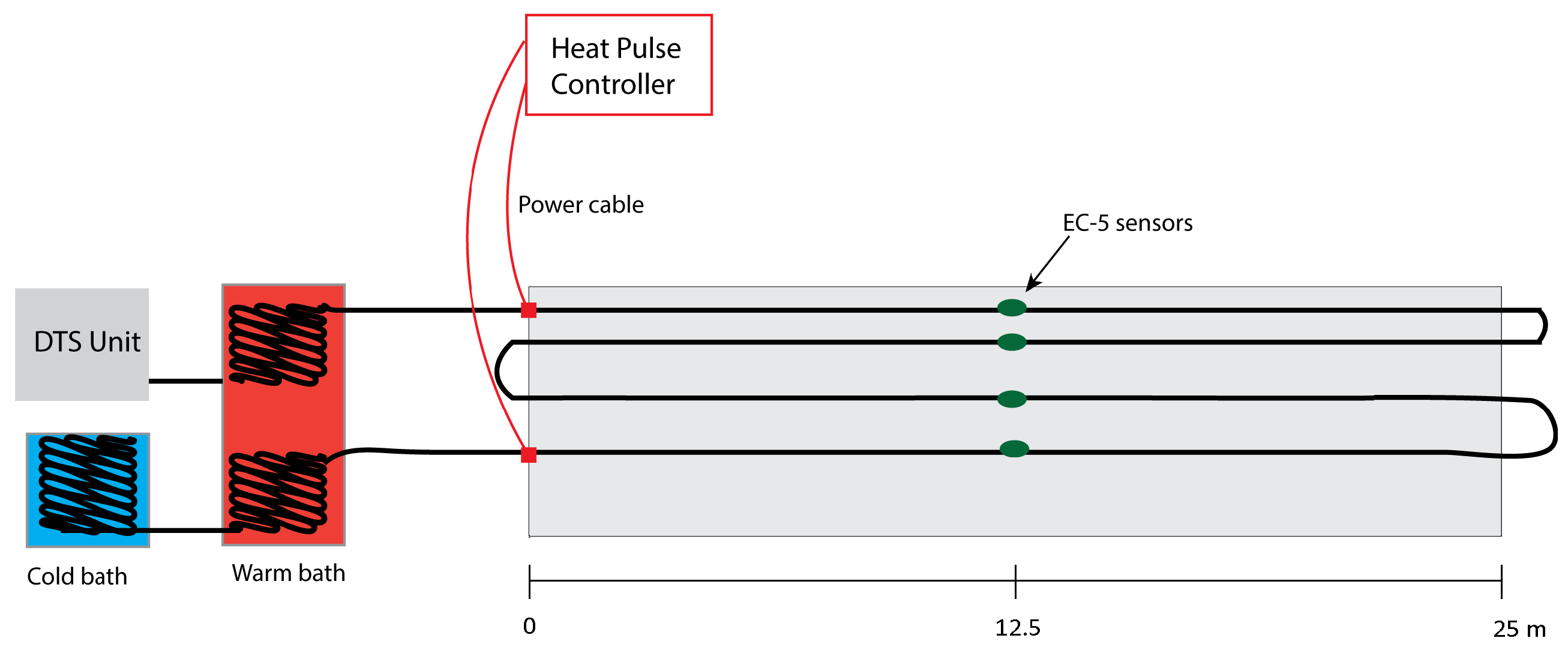
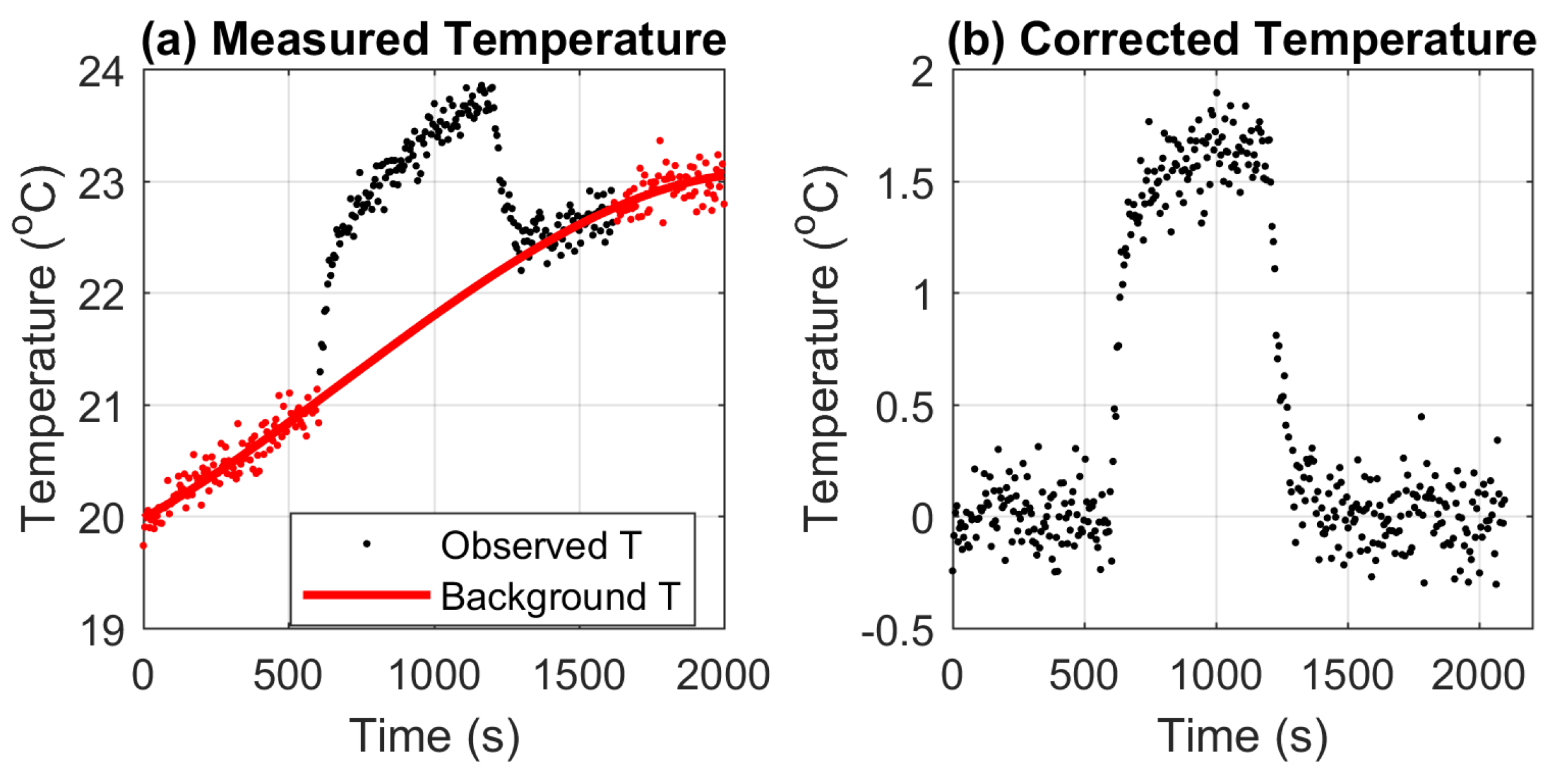
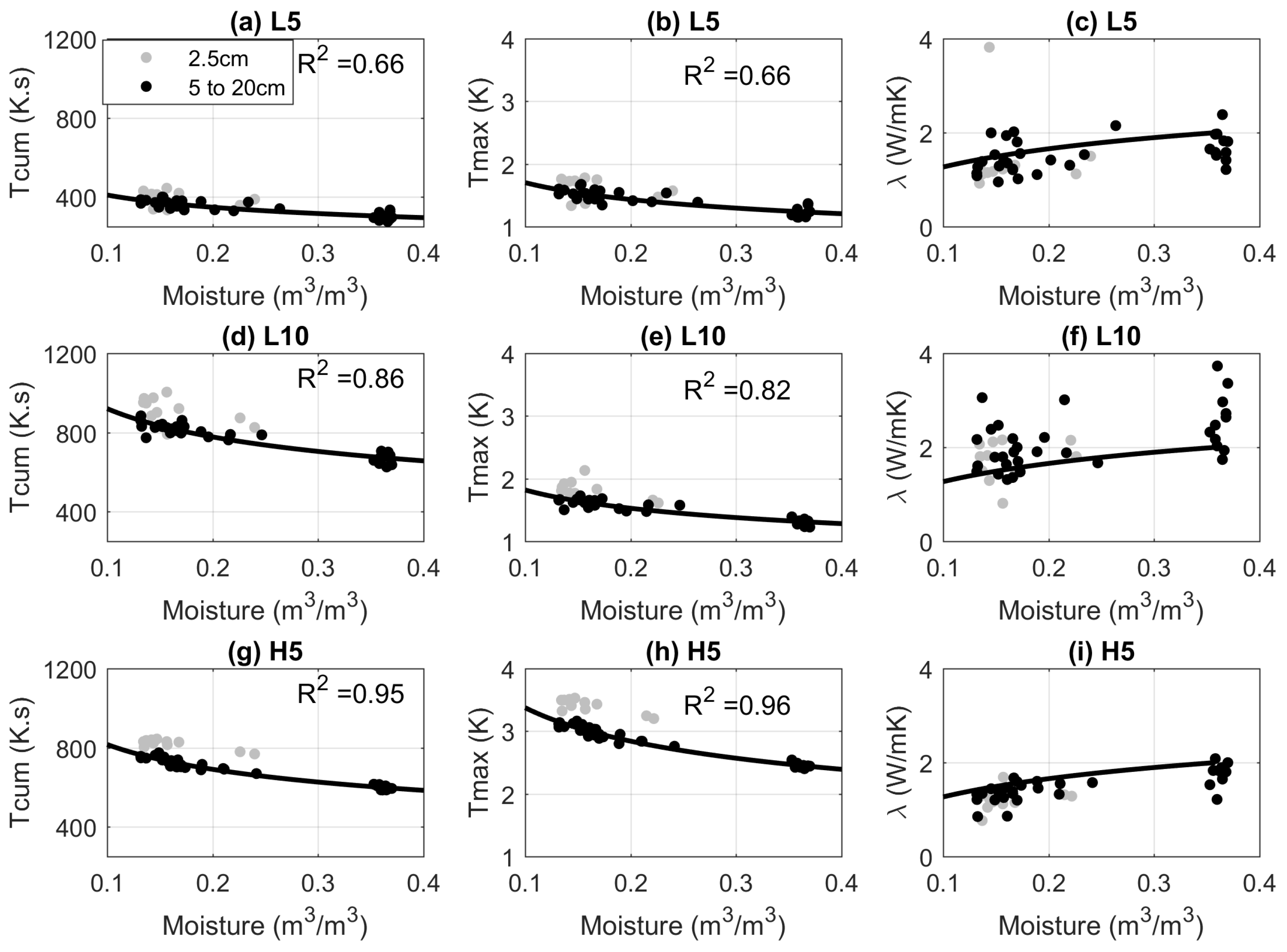
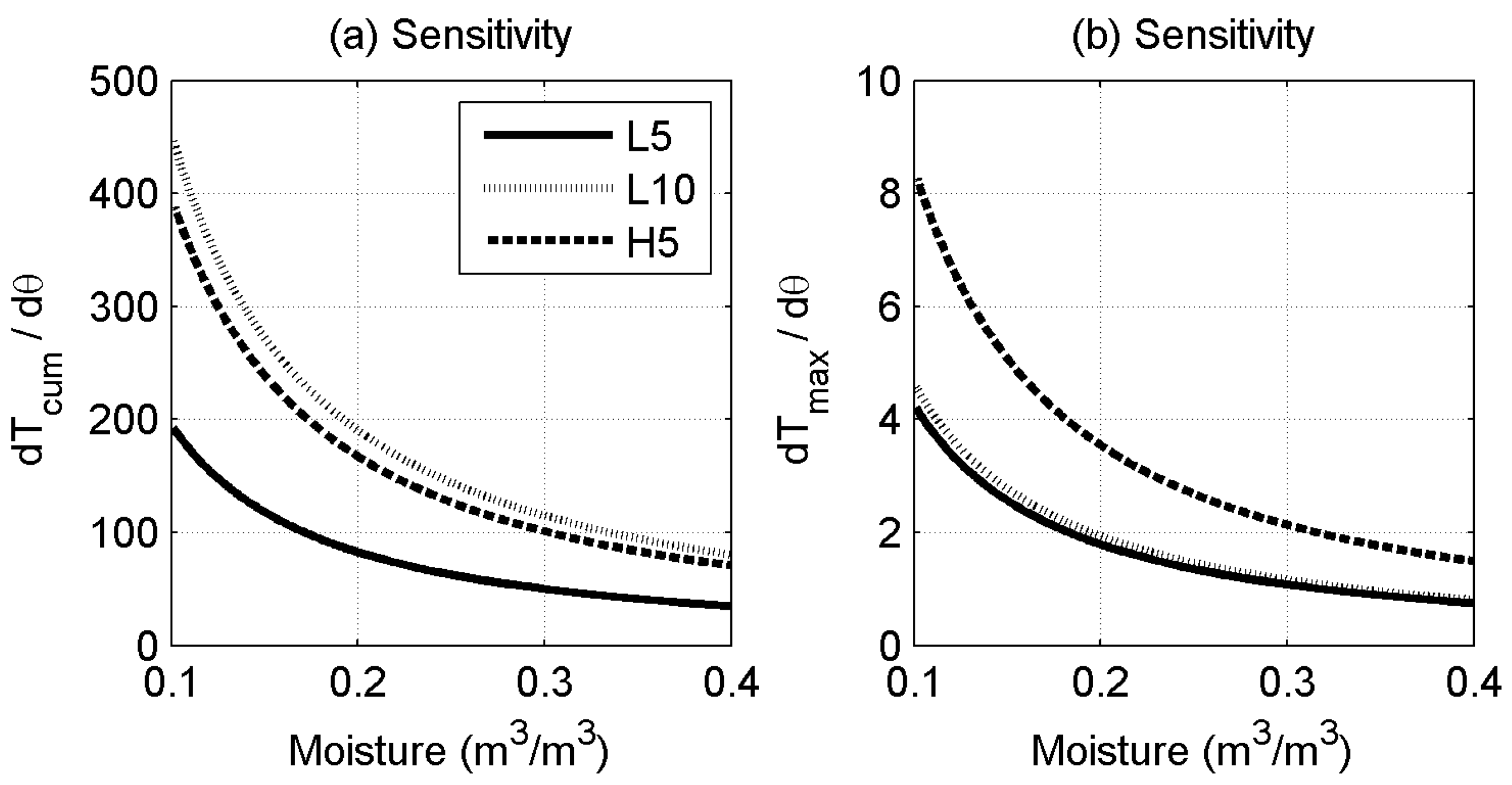
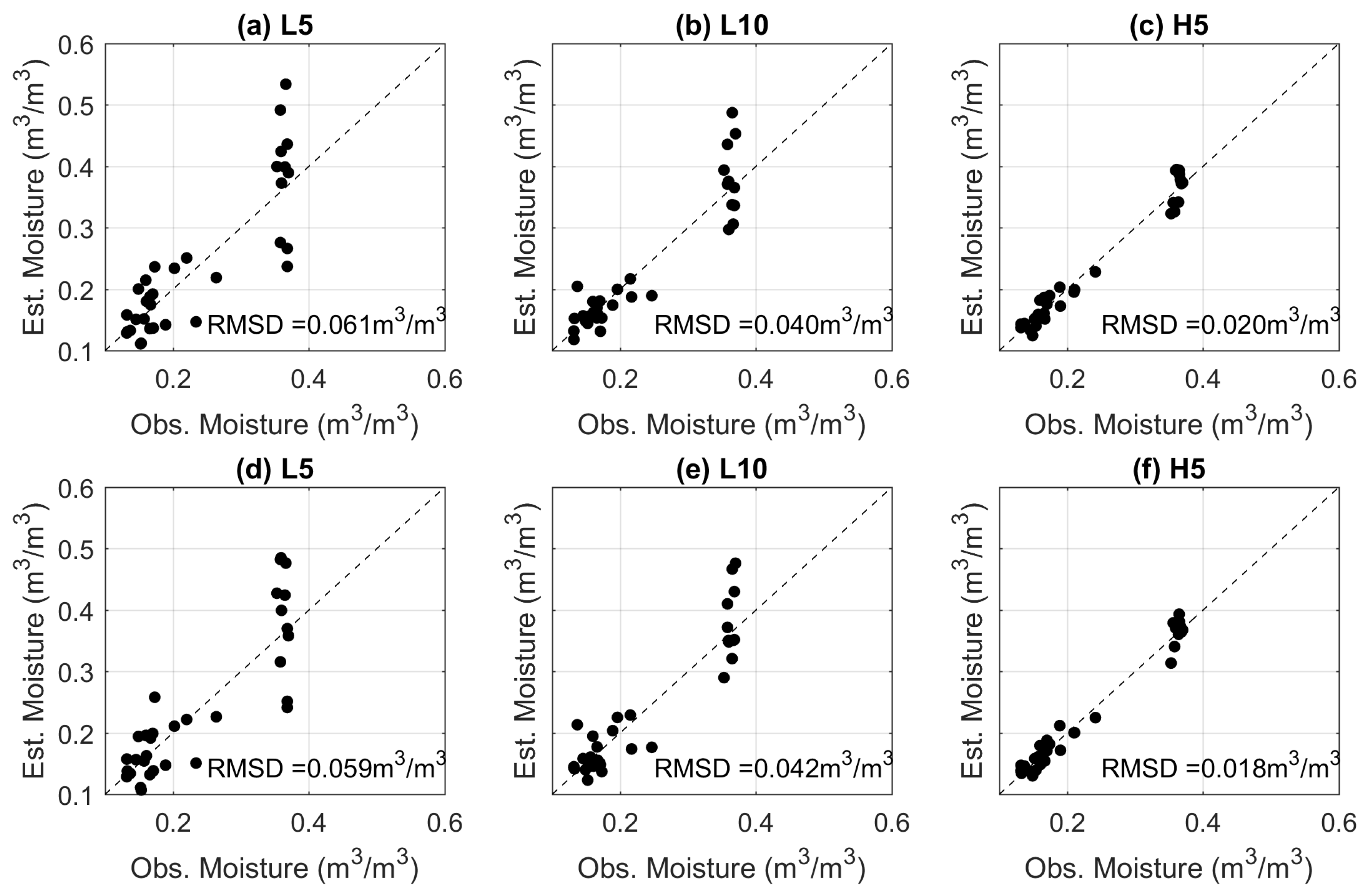
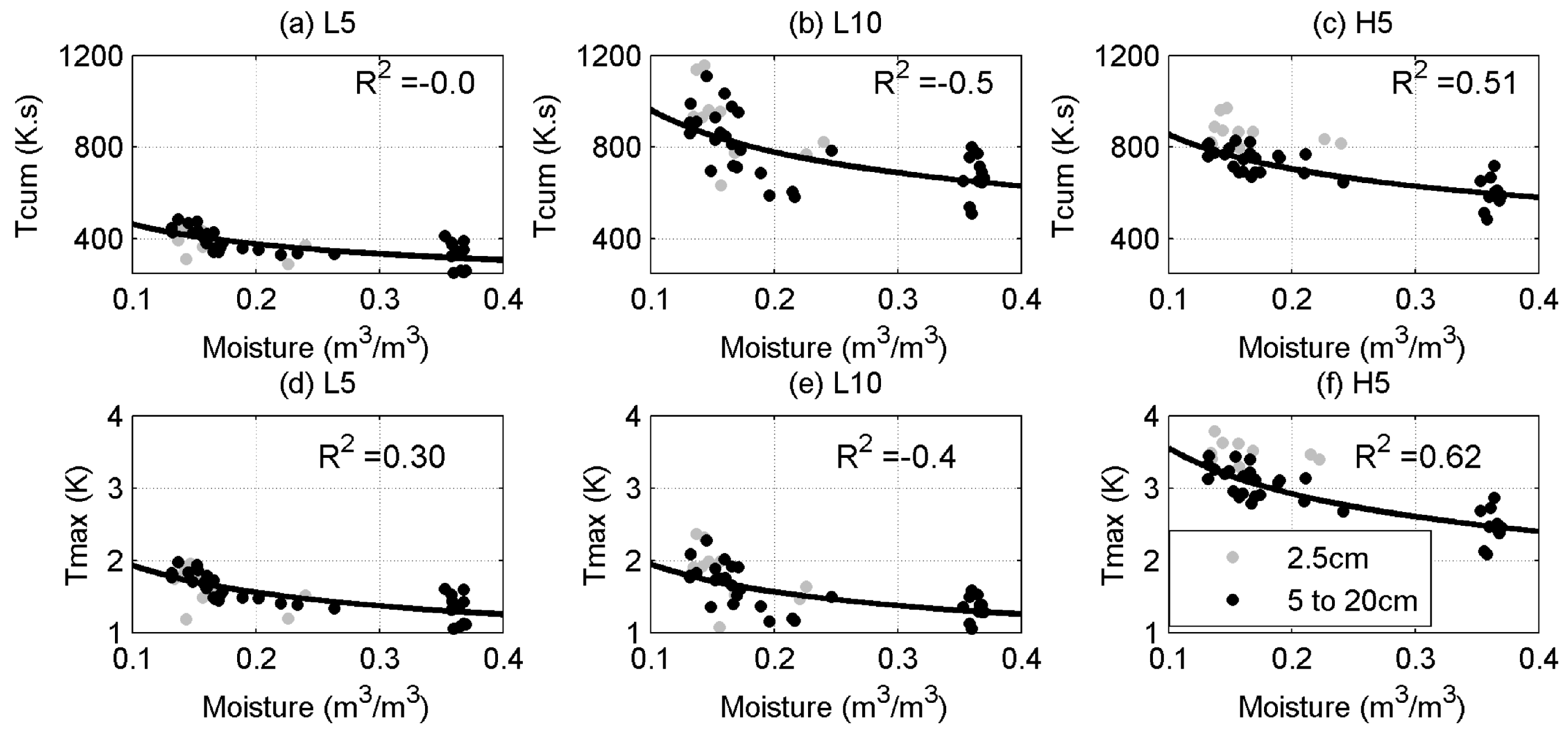
| Strategy | L5 | L10 | H5 |
|---|---|---|---|
| Strength () | 4.6 | 4.6 | 9.2 |
| Duration (min) | 5 | 10 | 5 |
© 2017 by the authors. Licensee MDPI, Basel, Switzerland. This article is an open access article distributed under the terms and conditions of the Creative Commons Attribution (CC BY) license (http://creativecommons.org/licenses/by/4.0/).
Share and Cite
Dong, J.; Agliata, R.; Steele-Dunne, S.; Hoes, O.; Bogaard, T.; Greco, R.; Van de Giesen, N. The Impacts of Heating Strategy on Soil Moisture Estimation Using Actively Heated Fiber Optics. Sensors 2017, 17, 2102. https://doi.org/10.3390/s17092102
Dong J, Agliata R, Steele-Dunne S, Hoes O, Bogaard T, Greco R, Van de Giesen N. The Impacts of Heating Strategy on Soil Moisture Estimation Using Actively Heated Fiber Optics. Sensors. 2017; 17(9):2102. https://doi.org/10.3390/s17092102
Chicago/Turabian StyleDong, Jianzhi, Rosa Agliata, Susan Steele-Dunne, Olivier Hoes, Thom Bogaard, Roberto Greco, and Nick Van de Giesen. 2017. "The Impacts of Heating Strategy on Soil Moisture Estimation Using Actively Heated Fiber Optics" Sensors 17, no. 9: 2102. https://doi.org/10.3390/s17092102
APA StyleDong, J., Agliata, R., Steele-Dunne, S., Hoes, O., Bogaard, T., Greco, R., & Van de Giesen, N. (2017). The Impacts of Heating Strategy on Soil Moisture Estimation Using Actively Heated Fiber Optics. Sensors, 17(9), 2102. https://doi.org/10.3390/s17092102








